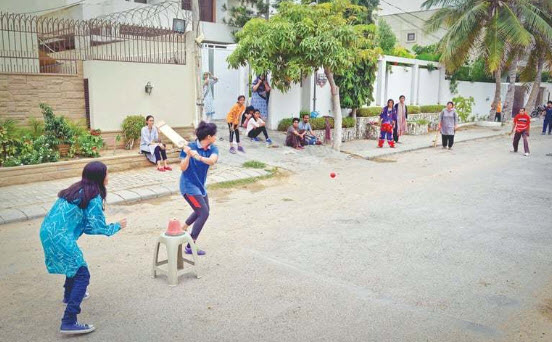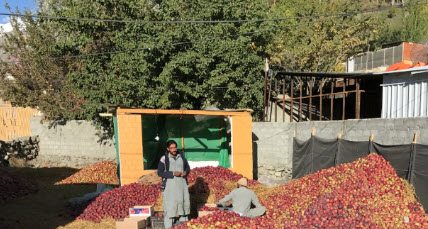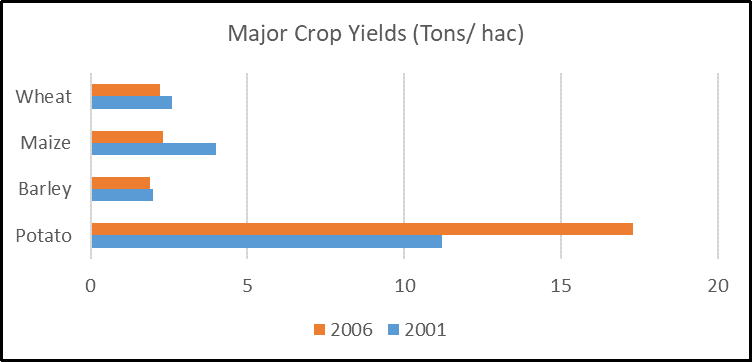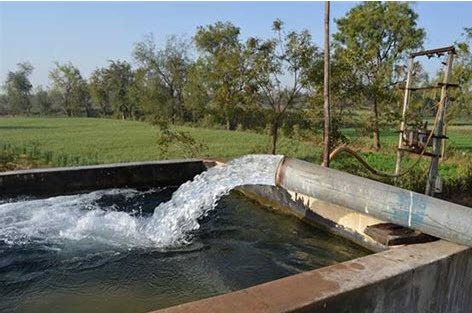On the back of another potential Test series whitewash against South Africa, CDPR held its Lahore Policy Exchange with Najam Sethi (former Chairman Pakistan Cricket Board), Dr. Ijaz Nabi (Country Director, International Growth Center), and Dr. Faisal Bari (Senior Research at Institute Development and Economic Alternatives) on the importance sports have in youth engagement.
A central element of any meaningful engagement for the youth is based around the avenues available for entertainment. The proliferation of mobile devices, computers, and the internet has ensured few Pakistanis are left without some form of entertainment at all times. However, the increasingly unplanned and messy growth of Pakistani cities guarantees that few have access to the more traditional forms of entertainment such as parks, sports, libraries, theaters, and music. This blog looks at how sports can play an integral part in effectively engaging youth and providing them public spaces to allow them to integrate into their communities as more meaningful citizens.
The nature of youth engagement unraveled by UNDP’s 2017 National Human Development Report is both alarming and depressing. Of the nearly 7,000 youth surveyed in 2015 as part of the Youth Perception Survey incorporated into UNDP’s report, 78.6% said they had no access to parks, 94.5% had no access to a library, 97.2% had not been to a live music event, 93.9% had not been to a sports event, 93% lacked access to any sports facilities, 97% had not been to a cinema while a whopping 71.7% reported they did not have access to or had attended any of the above!
Pakistan is one of the youngest countries in the world. Nearly 64% of the population is below the age of 29. This youth cohort will inevitably carve out of the future of Pakistan. As renowned economist Faisal Bari writes: “The next many elections, as well as most other larger and important national questions, are going to be decided, on behalf of all, by the youth of this country. Their large numbers will tip any democratic decision-making process that is put in place.”
Sports can play an integral role in our lives. Not only do sports act as avenues for healthy competition, they are also critical for character development. They teach individuals the importance of teamwork, strategy and learning how to accept defeat. Team sports impart further valuable lessons in leadership and how to get along with people one may not necessarily like. Which is why sports continue to be a central pillar of youth engagement in developed nations. Of the 84 million people residing in Germany, 24 million are registered with the club sports system consisting of many professional sports clubs offering facilities to people of all ages for a variety of sports. Similarly, varsity sports – at the university/college level – play a central role in the lives of many Americans. The same, unfortunately, cannot be said for Pakistan.
While access to top quality facilities has long been a central selling point of elite schools – such as Aitchison – genuine sporting facilities remain inaccessible to vast segments of the population. Due to lack of appropriate infrastructure and space constraints in most public and private schools, sports have virtually disappeared from the lives of many school-going children. Few of us would like a future in which Pakistan produces no more Imran Khans, Majid Khans, Sohail Abbases, and Jehangir Khans. That a relationship exists between sports at the school level and becoming internationally competitive, is an idea that does not need much convincing.
However, it is important to first examine the reasons why we are where we are.
A large part of the lack of focus on sporting infrastructure has to do with the way in which our society and communities are organized, and by extension, the way in which our cities are built. Armed with the right data, and an understanding of Pakistan’s socioeconomic trajectory over the past many years, it isn’t difficult to understand the reasons behind the dismal state of affairs in terms of providing opportunities to play sports.
Between 2005 and 2015, Lahore’s urban area increased by an average of 7.1% per year. Within this increase, low-density areas increased by 22% while the area occupied by medium- and high-density areas decreased by 4 and 54%, respectively. Low-density areas mainly take the form of housing societies like the Defense Housing Authority (DHA) and Bahria Town. These societies typically favor the construction of single-family bungalows with little to no space for parks or sporting facilities/complexes. Even when parks exist, they are often too small and proactively restrict and prevent the playing of sports by children. As a result, many children, and adults, are deprived of the type of communal socializing that should exist at the neighborhood level. At the same time, low-income housing continues to grow in the same form – small houses, narrow lanes, no open spaces. Neither of the two forms of urban expansion play a positive role in human development or creating much needed social spaces.
Perhaps even more alarming is the data from The Urban Unit that reveals that the top quintile of income earners own 58% of the land in Lahore while the bottom quintile accounts for a mere 6%. Such cities predominantly favor pro-rich development and ignores the needs of large segments of its populace especially important for their human development. Similar observations can be made in Faisalabad, Multan, and Rawalpindi, and across several cities in Pakistan.
In addition to poor urban planning, a major reason that helps explain the lack of any recreational facilities, and indeed feeds into the very problem of poor urban planning, is governance and coordination at the local level. Pakistan’s troubles with local governments are nothing new. Many local governments have bemoaned continued subservience to the provincial setup and an associated lack of funds. The lack of clarity over who’s running the show and the lack of funds both challenge effective governance. Investments in recreational facilities, and sporting facilities in particular, can only be made possible with broad-based reforms in the local government system. If local governments can step forward and take the lead in providing these much-needed resources, spaces, and support, the quality of life for many citizens can drastically improve. Additionally, the success of the Pakistan Super League over the past two years shows us the potential that private sector investments can have.
Given the right resources and support, and with the help of the private sector, sports can once again become a central feature in the lives of ordinary Pakistanis.
Bakhtiar Iqbal is a Research Assistant at the Consortium for Development Policy Research.








